A sensorimotor enhanced neuromusculoskeletal model for simulating postural control of upright standing
- PMID: 38812972
- PMCID: PMC11133552
- DOI: 10.3389/fnins.2024.1393749
A sensorimotor enhanced neuromusculoskeletal model for simulating postural control of upright standing
Abstract
The human's upright standing is a complex control process that is not yet fully understood. Postural control models can provide insights into the body's internal control processes of balance behavior. Using physiologically plausible models can also help explaining pathophysiological motion behavior. In this paper, we introduce a neuromusculoskeletal postural control model using sensor feedback consisting of somatosensory, vestibular and visual information. The sagittal plane model was restricted to effectively six degrees of freedom and consisted of nine muscles per leg. Physiologically plausible neural delays were considered for balance control. We applied forward dynamic simulations and a single shooting approach to generate healthy reactive balance behavior during quiet and perturbed upright standing. Control parameters were optimized to minimize muscle effort. We showed that our model is capable of fulfilling the applied tasks successfully. We observed joint angles and ranges of motion in physiologically plausible ranges and comparable to experimental data. This model represents the starting point for subsequent simulations of pathophysiological postural control behavior.
Keywords: biomechanics; forward dynamics; motor control; neural control; neuromusculoskeletal modeling; postural control; simulation; standing.
Copyright © 2024 Shanbhag, Fleischmann, Wechsler, Gassner, Winkler, Eskofier, Koelewijn, Wartzack and Miehling.
Conflict of interest statement
The authors declare that the research was conducted in the absence of any commercial or financial relationships that could be construed as a potential conflict of interest.
Figures

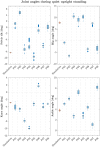
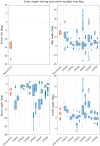
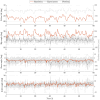

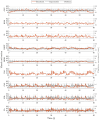
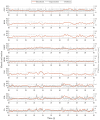
Similar articles
-
Exploring the Contribution of Proprioceptive Reflexes to Balance Control in Perturbed Standing.Front Bioeng Biotechnol. 2020 Aug 28;8:866. doi: 10.3389/fbioe.2020.00866. eCollection 2020. Front Bioeng Biotechnol. 2020. PMID: 32984265 Free PMC article.
-
Learning to stand with unexpected sensorimotor delays.Elife. 2021 Aug 10;10:e65085. doi: 10.7554/eLife.65085. Elife. 2021. PMID: 34374648 Free PMC article.
-
Implementation of a physiologically identified PD feedback controller for regulating the active ankle torque during quiet stance.IEEE Trans Neural Syst Rehabil Eng. 2007 Jun;15(2):235-43. doi: 10.1109/TNSRE.2007.897016. IEEE Trans Neural Syst Rehabil Eng. 2007. PMID: 17601193
-
Age-related changes in leg proprioception: implications for postural control.J Neurophysiol. 2019 Aug 1;122(2):525-538. doi: 10.1152/jn.00067.2019. Epub 2019 Jun 5. J Neurophysiol. 2019. PMID: 31166819 Free PMC article. Review.
-
Sensorimotor control of standing balance.Handb Clin Neurol. 2018;159:61-83. doi: 10.1016/B978-0-444-63916-5.00004-5. Handb Clin Neurol. 2018. PMID: 30482333 Review.
Cited by
-
Humans self-organise balance control strategies on a dynamic platform.Sci Rep. 2025 Jul 8;15(1):24366. doi: 10.1038/s41598-025-09127-3. Sci Rep. 2025. PMID: 40628838 Free PMC article.
References
-
- Geijtenbeek T. (2021). The Hyfydy Simulation Software. Available online at: https://hyfydy.com
LinkOut - more resources
Full Text Sources

